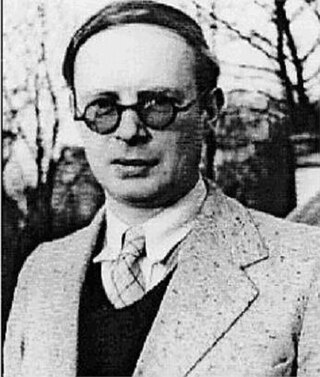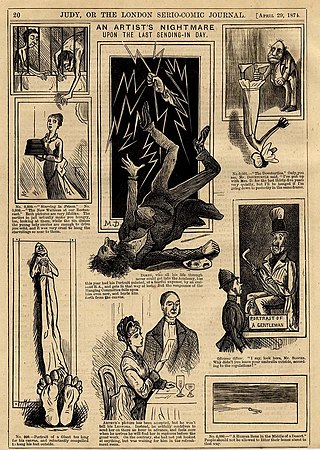
William Hale White, known by his pseudonym Mark Rutherford, was a British writer and civil servant. His obituary in The Times stated that the "employment of a pseudonym, and sometimes of two, was sufficient to prove a retiring disposition, and Mr. Hale White was little before the world in person."
Charles Edward Cutts Birchall Appleton was an Oxford don and scholarly entrepreneur.

Frederick Augustus Voigt was a British journalist and author of German descent, most famous for his work with the Manchester Guardian and his opposition to dictatorship and totalitarianism on the European continent.

John Bowyer Buchanan Nichols, known as Bowyer Nichols, was an English poet and artist.

Isabelle Émilie de Tessier, who worked under the pseudonyms Marie Duval and Ambrose Clarke, was a British cartoonist, known as co-creator of the seminal cartoon character Ally Sloper, the popular character was spun off into his own comic, Ally Sloper's Half Holiday, in 1884.

Shafts was an English feminist magazine produced by Margaret Sibthorp from 1892 until 1899. Initially published weekly and priced at one penny, its themes included votes for women, women's education, and radical attitudes towards vivisection, dress reform, women's control of their sexuality, child care, and vegetarianism.
Bradbury & Evans (est.1830) was an English printing and publishing business founded by William Bradbury (1799–1869) and Frederick Mullett Evans (1804–1870) in London.
The Imperial Dictionary of Universal Biography was a biographical dictionary of the nineteenth century, published by William Mackenzie in Glasgow.
Borderland was a magazine founded and edited by William Thomas Stead from 1893 to 1897. The focus of the publication was on spiritualism and psychical research, mainly from a supportive point of view.
Oswald John Frederick Crawfurd was a British journalist, man of letters and diplomat. He served over 24 years as British consul in Oporto, Portugal.
Delabere Pritchett Blaine (1768–1845) was an English veterinary surgeon and Professor of Animal Medicine.
The North British Review was a Scottish periodical. It was founded in 1844 to act as the organ of the new Free Church of Scotland, the first editor being David Welsh. It was published until 1871; in the last few years of its existence it had a liberal Catholic editorial policy.
James Dredge was an English civil engineer and journalist of engineering. He is best known for being co-editor of Engineering, illustrating, photographing and surveying many bridges in Britain in the latter part of the 19th century.
The Sporting Chronicle, known colloquially as The Chron, was a Manchester-based, daily, national horse racing newspaper which operated in Great Britain for 112 years until its closure in 1983 due to unsustainable losses. The last edition was published on 23 July of that year.

Edward Hulton (1838–1904) was a British newspaper proprietor in Victorian Manchester. Born the son of a weaver, he was an entrepreneur who established a vast newspaper empire and was the progenitor of a publishing dynasty.
Frederick Knight Hunt (1814–1854) was an English journalist and author, known for The Fourth Estate, a history of journalism.
Vincent George Dowling (1785–1852) was an English journalist. He was an influential figure in the development of sports journalism, who also worked covertly as a government informer.
The Evangelical Magazine was a monthly magazine published in London from 1793 to 1904, and aimed at Calvinist Christians. It was supported by evangelical members of the Church of England, and by nonconformists with similar beliefs. Its editorial line included a strong interest in missionary work.
George Luxford was an English botanist, printer and journalist.

Edmund Dangerfield was an English printer and magazine publisher who specialised in cycling and motor transport. These included Cycling launched in 1891, Commercial Motor launched in 1905.







